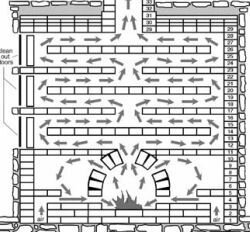ditchrider
Burning Hunk
I sure wish I would have seen this thread before I made my first stove decision. But in the end BrowningBAR set me straight and I reconsidered. The whole rating system is arbitrary. ALL OF IT. The truth is in the firebox size. It's measurable, it's factual, it's verifiable. All that's left is the cat/non-cat and also stone/steel debate which is just as political (or mere preference).
This is a great site and acts on the good intent of it's members. One can spend hundreds or thousands on their stoves and if he/she just spends a few nights on this forum a lot of questions can come up and answers are found somewhere from experienced users. It makes the difference between money invested or money wasted.
Thanks guys!
This is a great site and acts on the good intent of it's members. One can spend hundreds or thousands on their stoves and if he/she just spends a few nights on this forum a lot of questions can come up and answers are found somewhere from experienced users. It makes the difference between money invested or money wasted.
Thanks guys!




